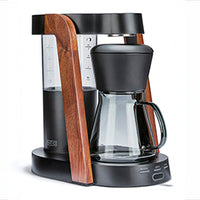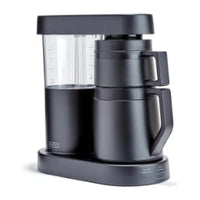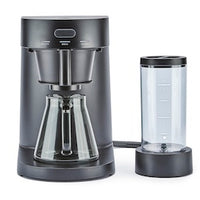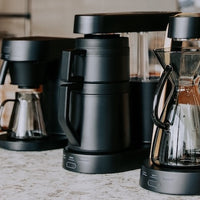“Strong” Isn’t a Flavor: Why You’re Misreading Your Brew Strength
Key Takeaways
-
"Strong" coffee doesn’t mean over-extracted or bitter — it refers to brew ratio and concentration
-
Brew strength is determined by the amount of coffee used relative to water
-
Bitterness, heaviness, or intensity doesn’t always equal strength
-
Adjusting your coffee-to-water ratio gives more control over flavor than brewing hotter or longer
-
Understanding strength helps you troubleshoot flavor issues more accurately
Many people describe their ideal cup of coffee as "strong." But when pressed on what that actually means, the definition varies wildly — more caffeine, bolder flavor, darker roast, more bitterness, or just a cup that "wakes you up."
Here’s the truth: "Strong" isn’t a flavor — it’s a measurement. And misunderstanding it is one of the most common ways coffee drinkers end up with inconsistent, unpleasant brews.
What Brew Strength Actually Means
In coffee terms, strength refers to how concentrated your coffee is. It’s a function of how much ground coffee you use in proportion to your water.
The standard brewing ratio for balanced coffee is roughly 1:15 to 1:17 (one part coffee to fifteen to seventeen parts water by weight). Move closer to 1:12 or 1:13, and you get a stronger, more concentrated cup.
Important distinction:
-
Strength = concentration
-
Extraction = how much flavor is pulled from the grounds
It’s possible to have:
-
A strong but under-extracted cup: concentrated but sour or weak-tasting
-
A weak but over-extracted cup: watery but bitter
Understanding this distinction is key to improving your coffee.
Why We Misuse the Word "Strong"
Most of us grew up equating “strong” with harsh, bitter, or intense — often because bad coffee (especially old diner-style brews) tasted that way.
But true strength should not taste unpleasant. It should simply feel more concentrated. Think of the difference between orange juice and orange concentrate. One isn’t more bitter — just more dense.
Common misinterpretations:
-
“It’s strong!” (but really, it’s just over-extracted and bitter)
-
“This is too weak.” (but really, it’s a proper extraction with a light roast)
Without knowing the underlying cause, we’re more likely to fix the wrong problem — like grinding finer or brewing longer, which can backfire.
How to Actually Make Stronger Coffee (The Right Way)
If you genuinely want a stronger cup, increase the amount of coffee — not the brew time or temperature.
Steps:
-
Use a higher coffee-to-water ratio (e.g., 1:13 instead of 1:16)
-
Keep water temperature between 195°F and 205°F
-
Don’t extend brew time excessively — that impacts extraction, not strength
-
Taste and adjust in small increments (use a scale!)
This gives you more concentration without venturing into bitter or burnt territory.
Signs You’re Misreading Strength
Sometimes what you think is “weak” coffee is actually:
-
A light roast with subtle flavors
-
A clean, well-extracted cup with less body
-
Brewed to a balanced ratio but perceived as soft due to expectations
Other times, what seems “strong” is just:
-
Overly dark roast
-
Over-extracted bitter notes
-
Bad water masking nuance
Training your palate to separate intensity from quality will help you dial in better brews.
Adjusting Brew Strength Without Killing Flavor
Brewing stronger coffee isn’t just about adding more grounds — it’s about knowing how much is too much.
Overdosing your coffee bed can:
-
Lead to uneven saturation
-
Cause clogging in pour-over or drip setups
-
Overwhelm the flavor profile
Instead, work in steps:
-
Increase dose by 1 gram per cup and test the result
-
Use a consistent grind size to isolate strength from extraction errors
-
Avoid letting strength trick you into thinking you want bitterness — those aren’t the same
The Role of Roast in Perceived Strength
Dark roasts are often perceived as “stronger” due to their bolder, smokier flavors. But in truth, they often have less caffeine than lighter roasts.
Lighter roasts can taste “weaker” simply because their flavors are more delicate — not because they’re under-extracted or thin.
Knowing this helps you choose beans and methods that better match your preferences.
Brewing Gear Matters, Too
The brewing device you use also plays a role in strength and perception.
-
French press tends to produce a thicker, heavier-bodied coffee
-
Pour-over highlights clarity and nuance, which might read as "lighter"
-
Espresso is highly concentrated, though not always "stronger" in caffeine
Understanding how your gear influences the cup helps you avoid mislabeling your coffee based on feel alone.
Strength, Clarity, and Control
When you think in terms of ratios and extraction rather than intensity, your coffee improves fast. You get better at dialing in recipes and adjusting for bean or brew method changes.
It’s not about chasing strength for strength’s sake — it’s about matching concentration to your taste preference without sacrificing balance.
A Note on Precision
Coffee machines like those from Ratio Coffee support repeatable, consistent brewing — which makes dialing in strength easier. By focusing on dose and water volume, you can zero in on your ideal cup every time.
A stronger cup shouldn’t come at the cost of flavor clarity. With control, it doesn’t have to.
Frequently Asked Questions
Is strong coffee more caffeinated?
Not necessarily. Strength is about concentration, not caffeine. Lighter roasts often have more caffeine by weight than dark roasts.
Why does my strong coffee taste bitter?
You’re likely over-extracting — using too fine a grind or brewing too long. Try adjusting your ratio instead.
What’s the best ratio for strong coffee?
Try 1:13 (coffee to water by weight) and adjust based on taste. Always weigh your ingredients.
Should I use darker roasts for stronger flavor?
Darker roasts taste more intense but don’t guarantee more caffeine or better strength. Try a medium roast with a stronger ratio for balanced intensity.
 Ratio Eight S2
Ratio Eight S2
 Ratio Eight Original
Ratio Eight Original
 Ratio Six
Ratio Six
 Ratio Four
Ratio Four
 Compare Machines
Compare Machines






